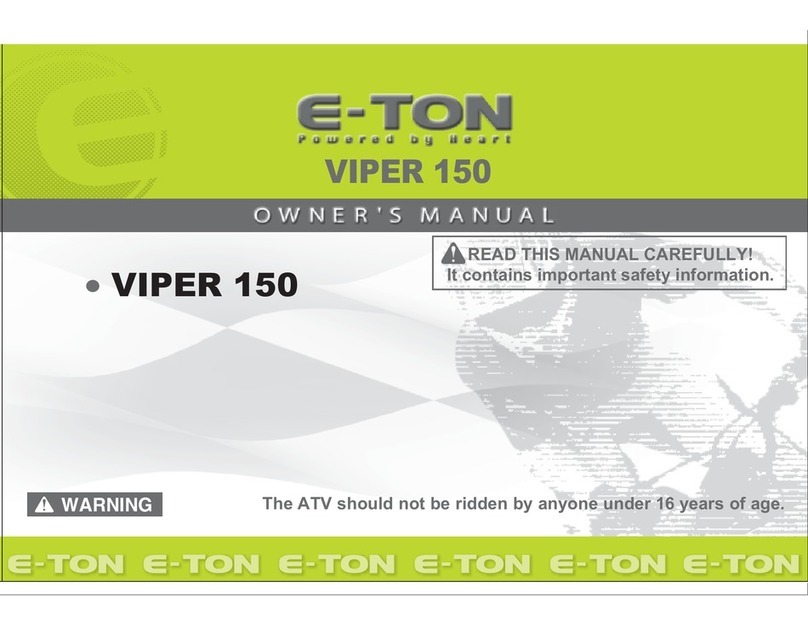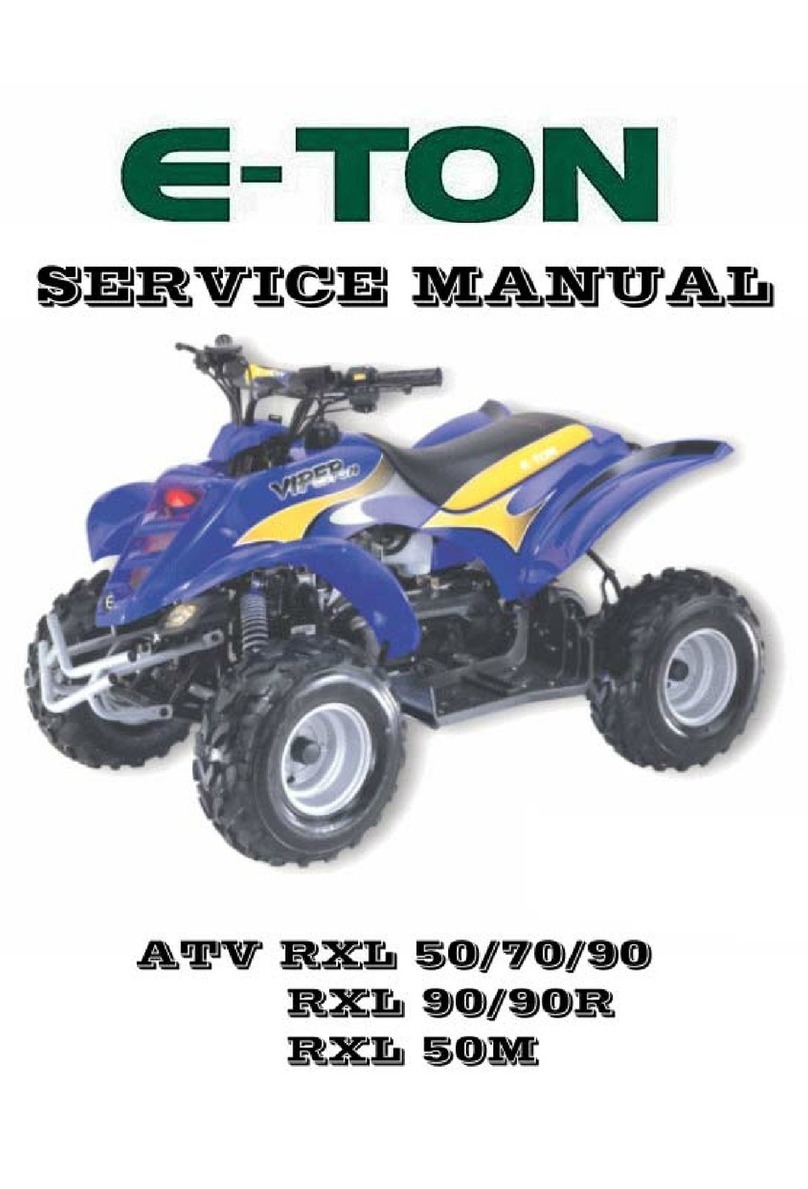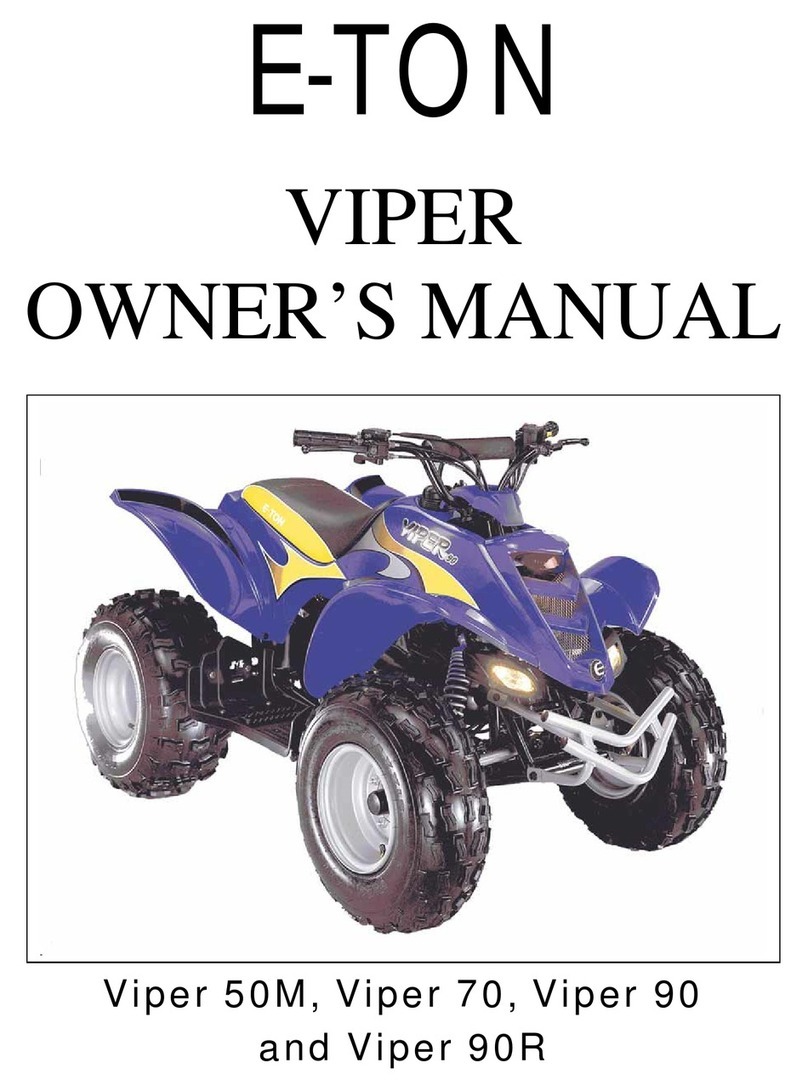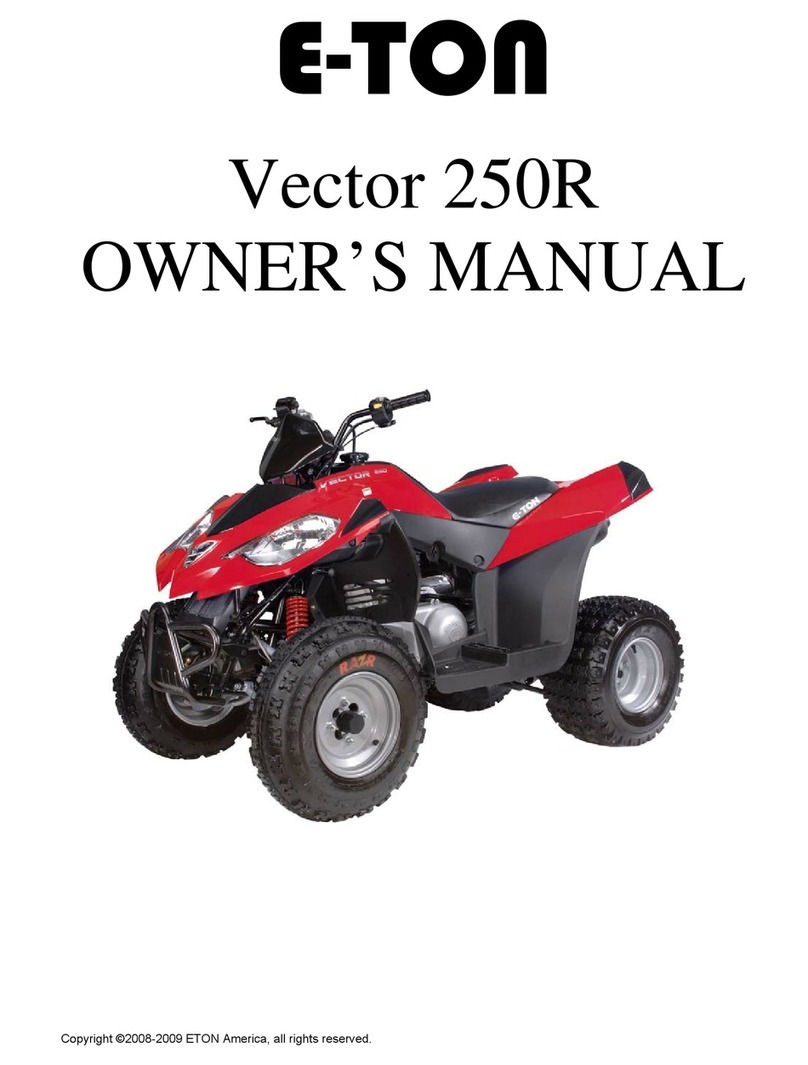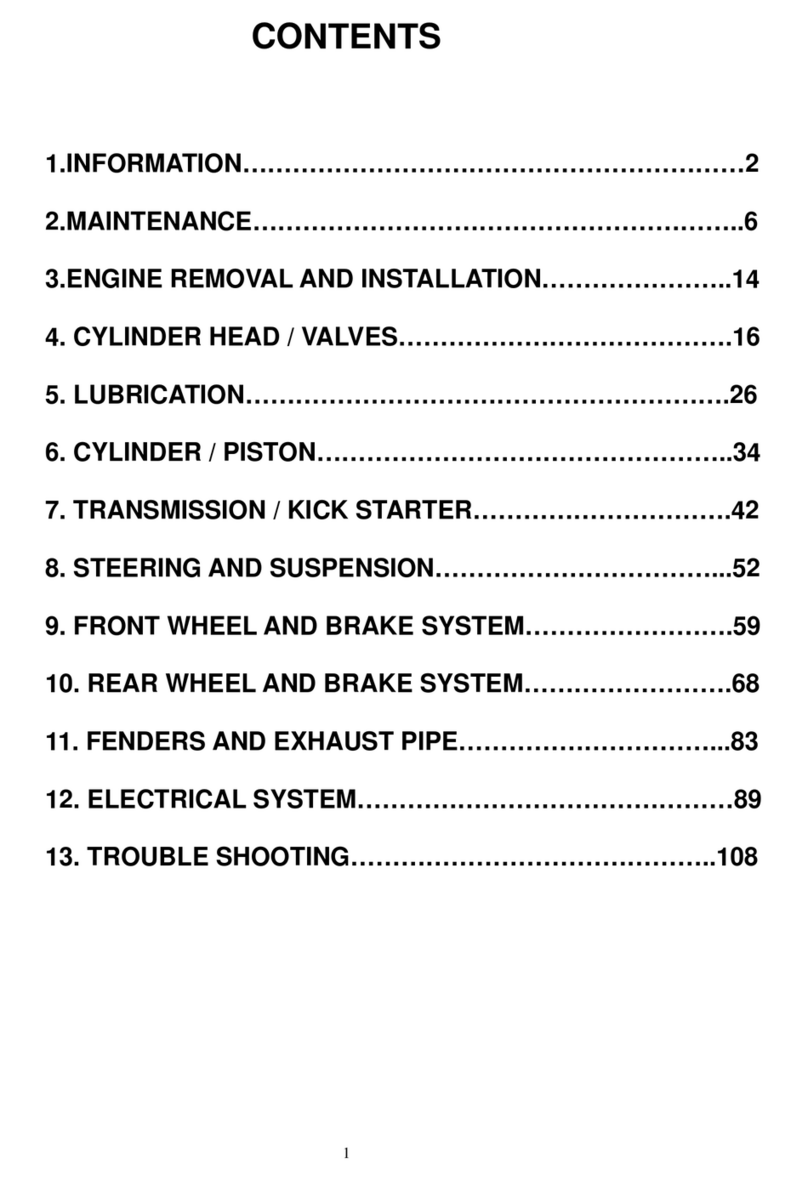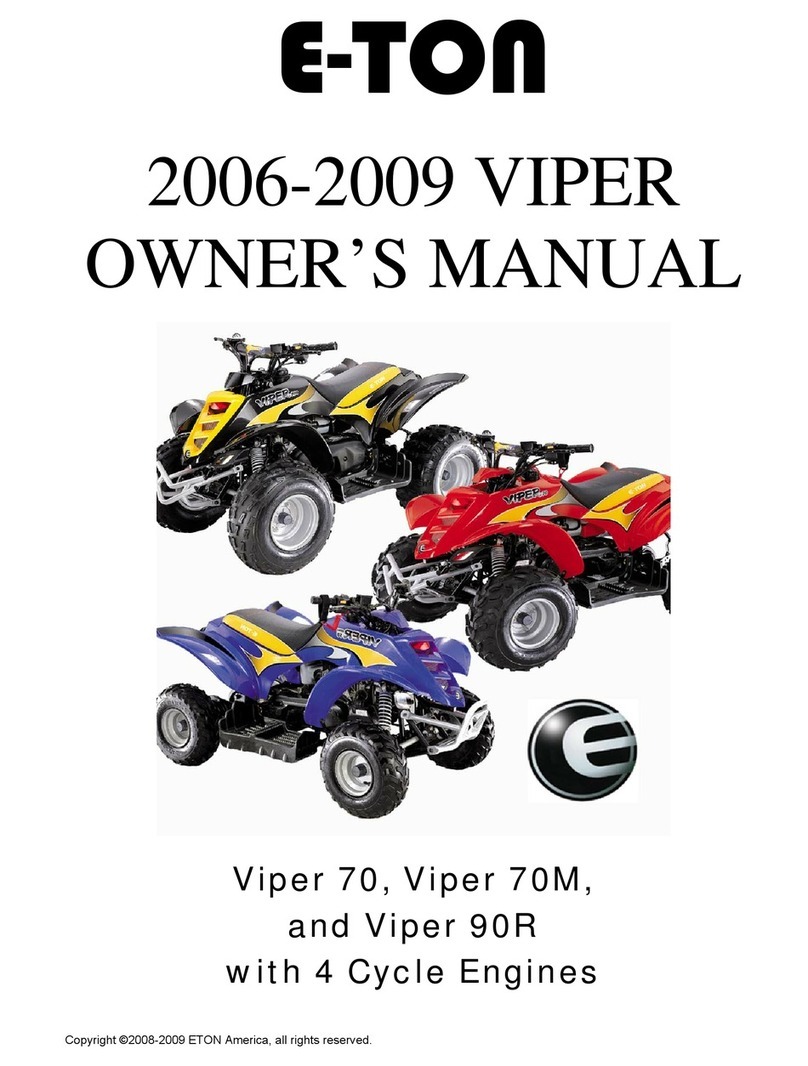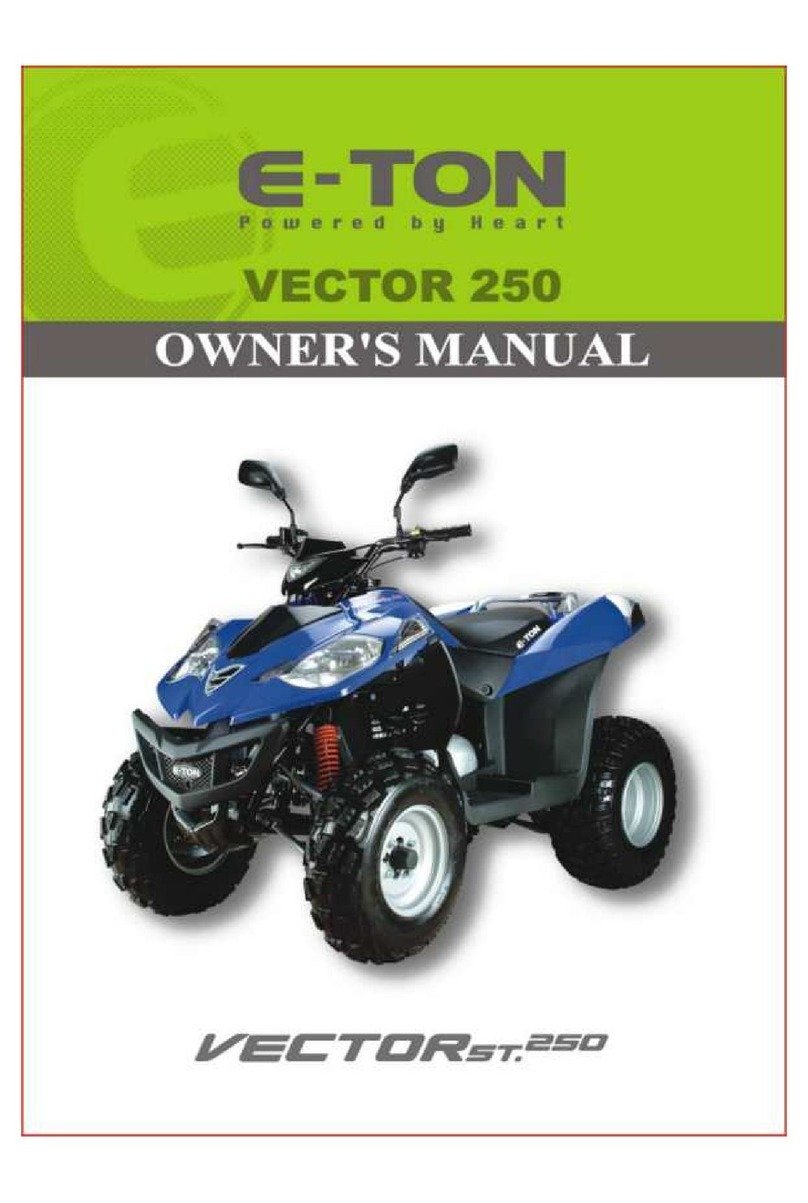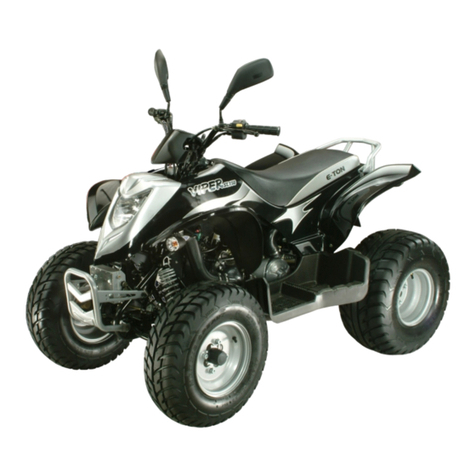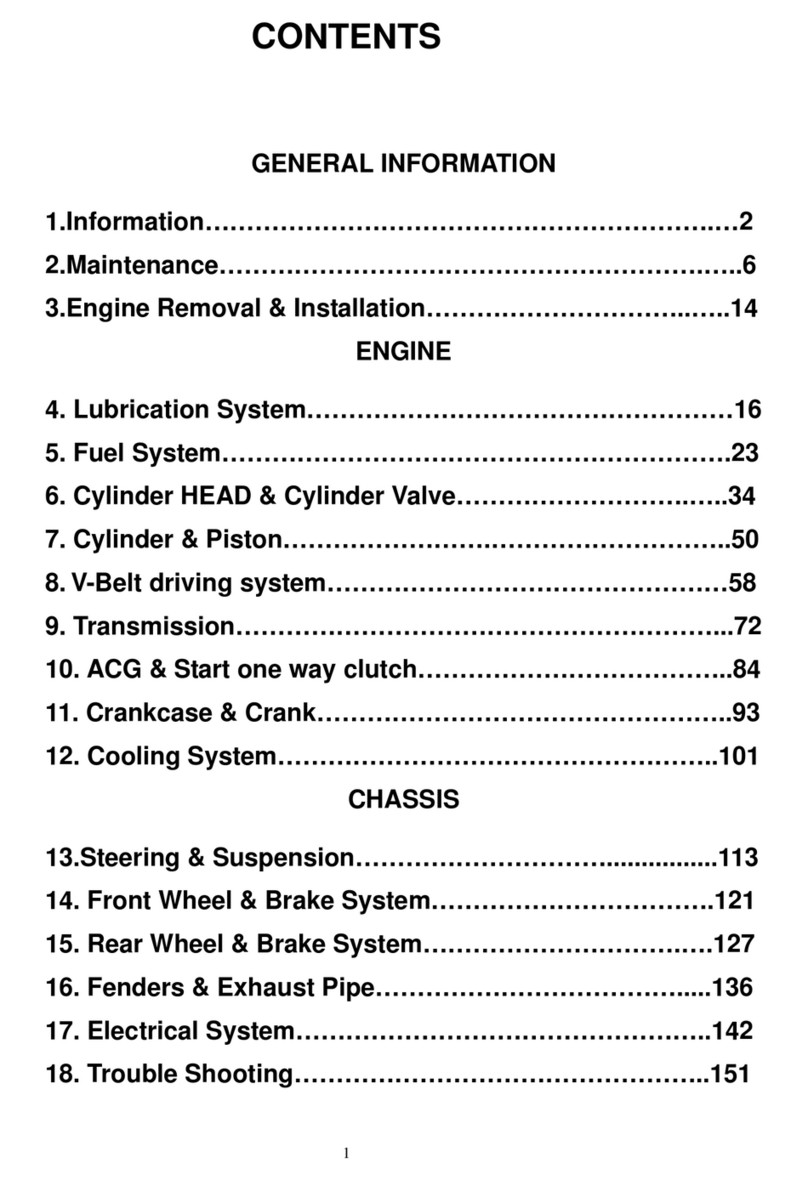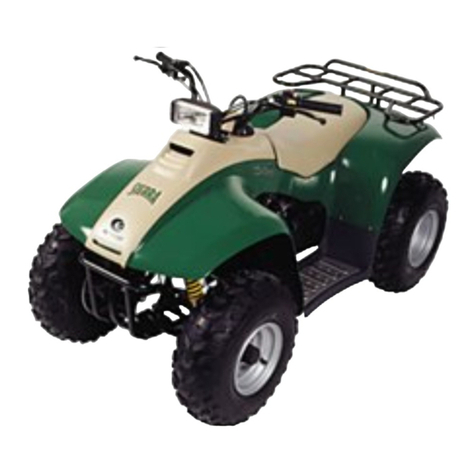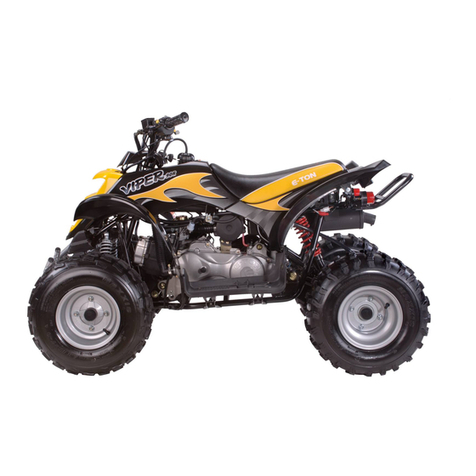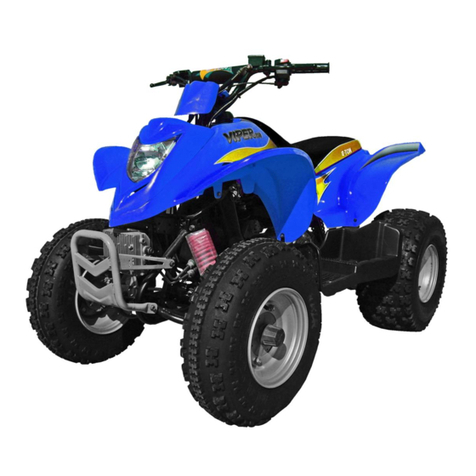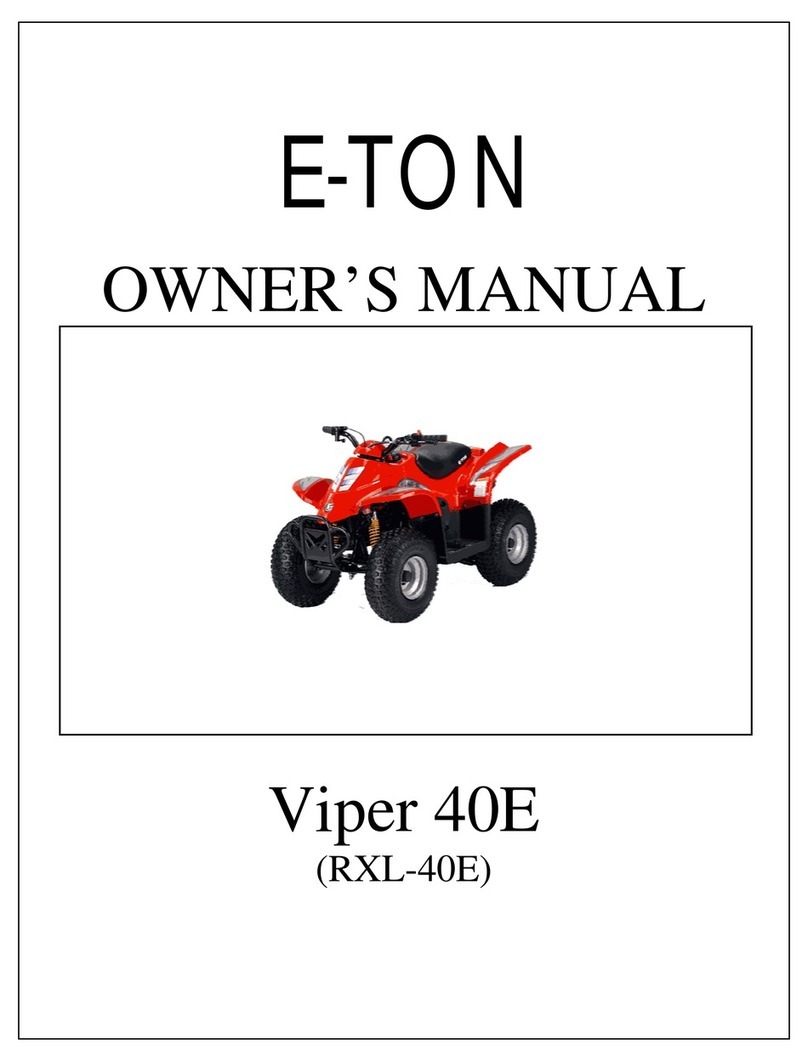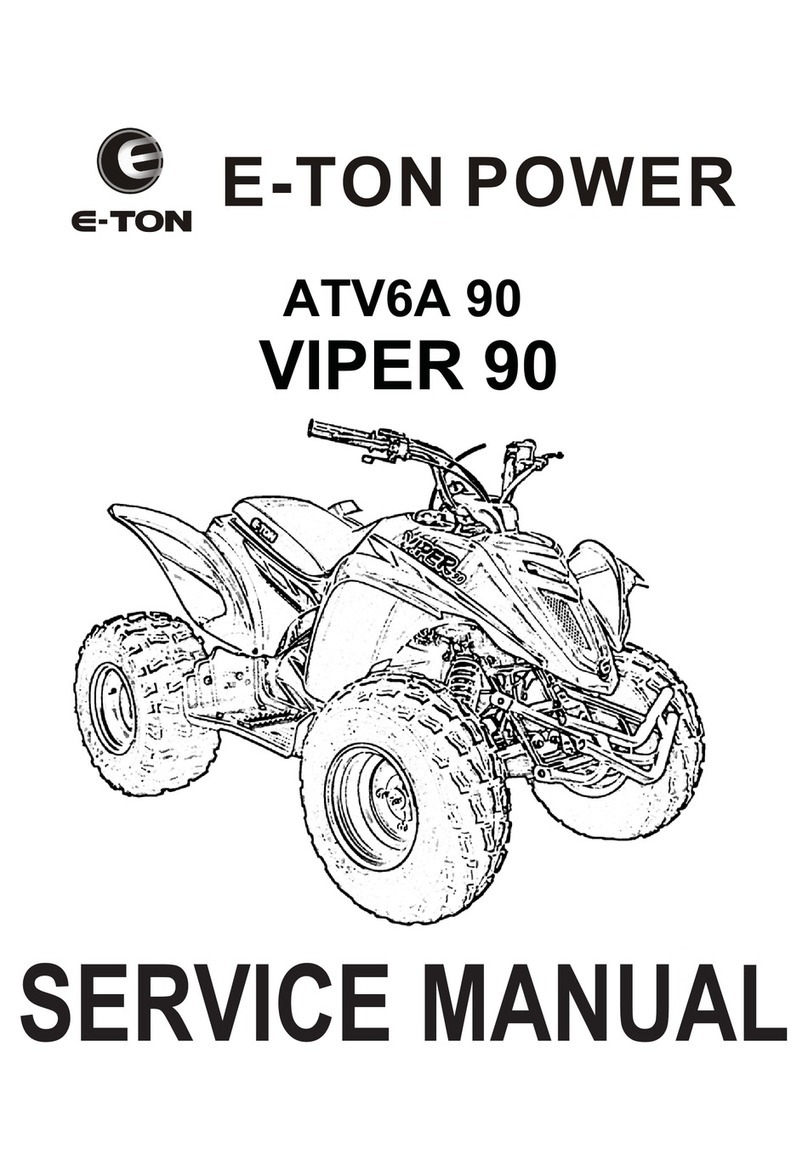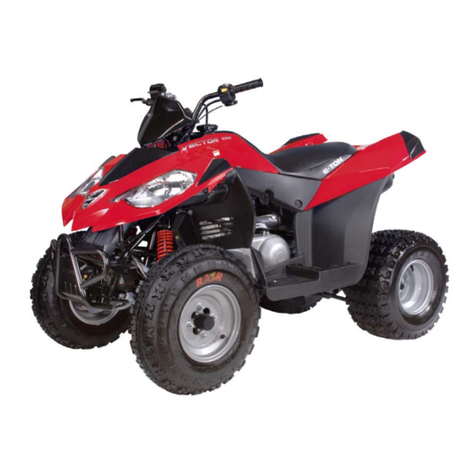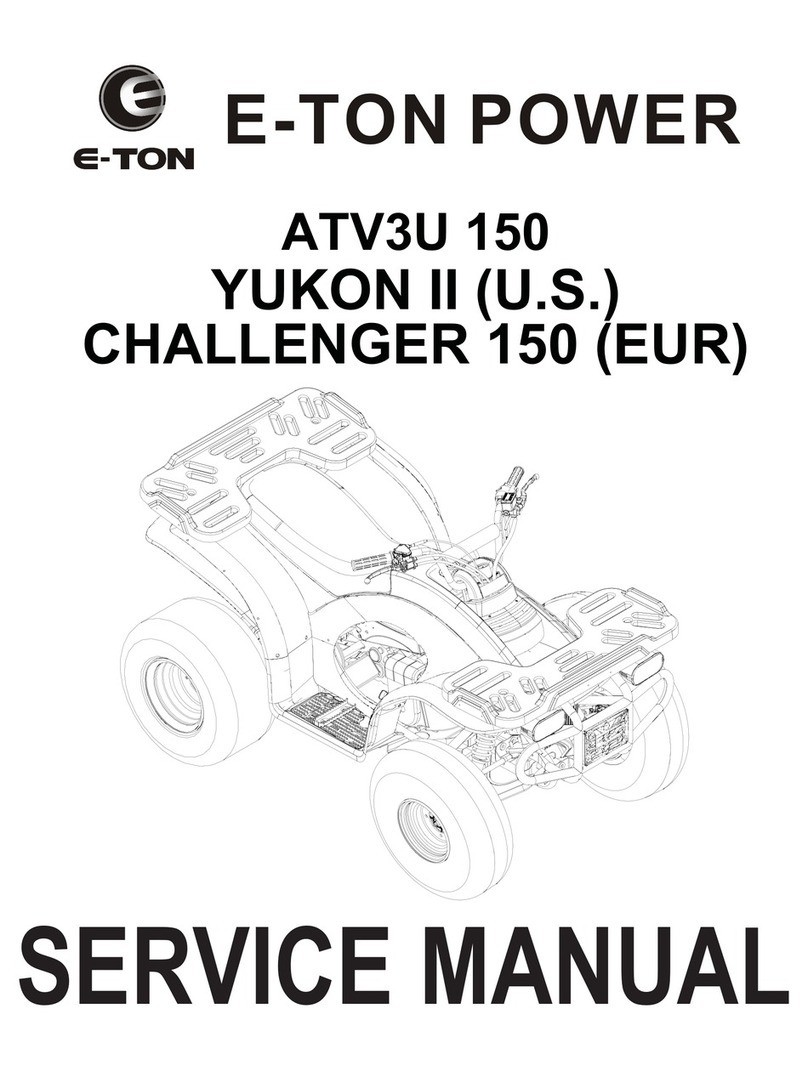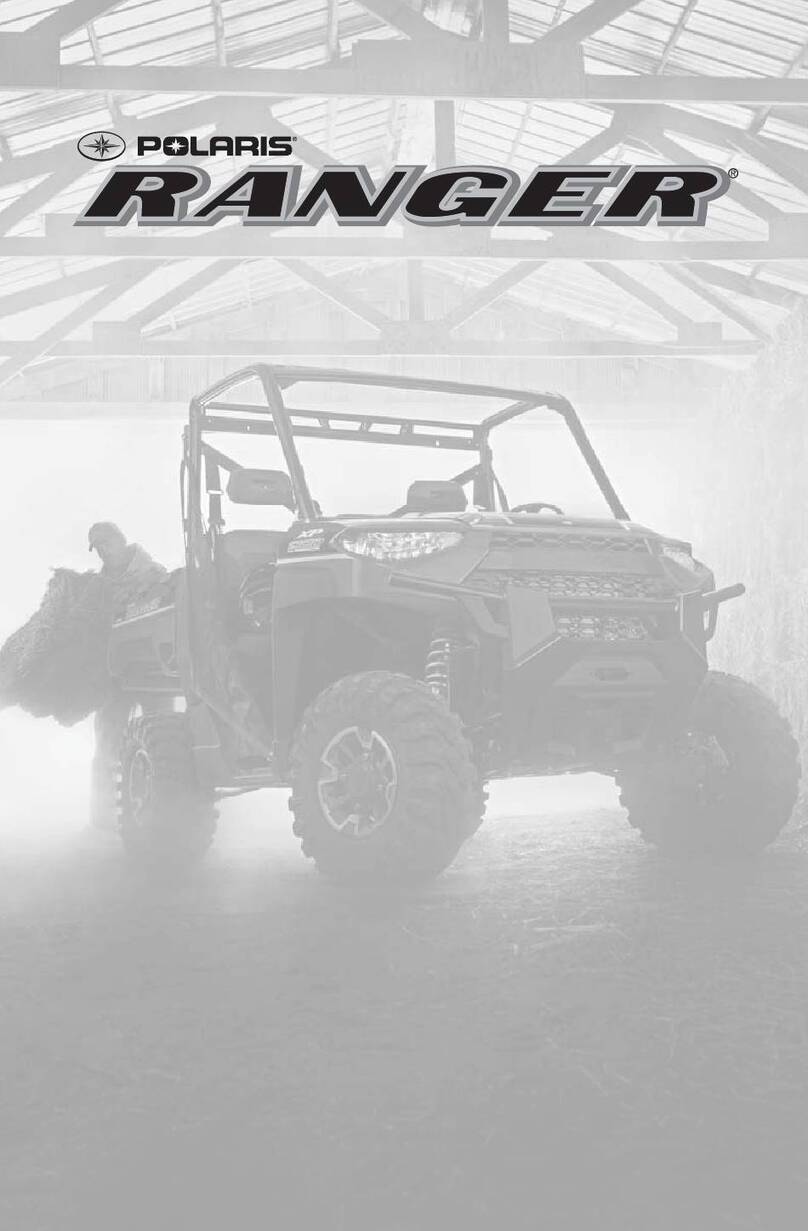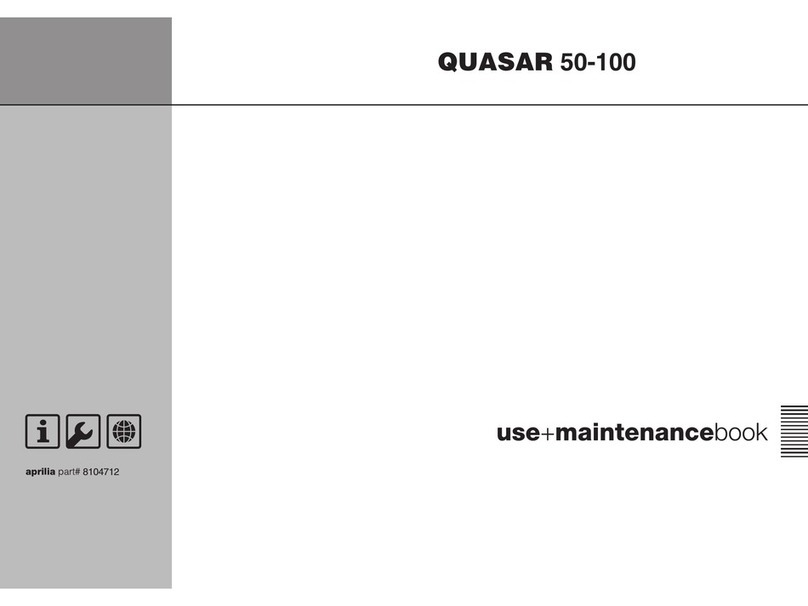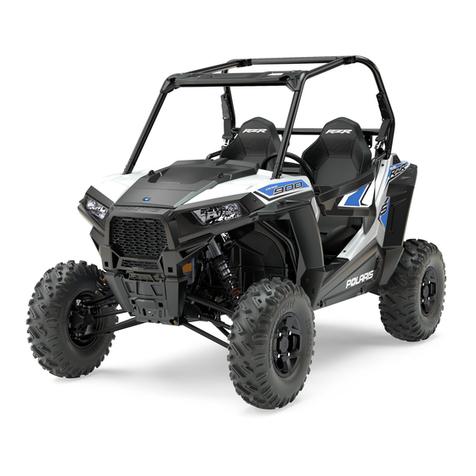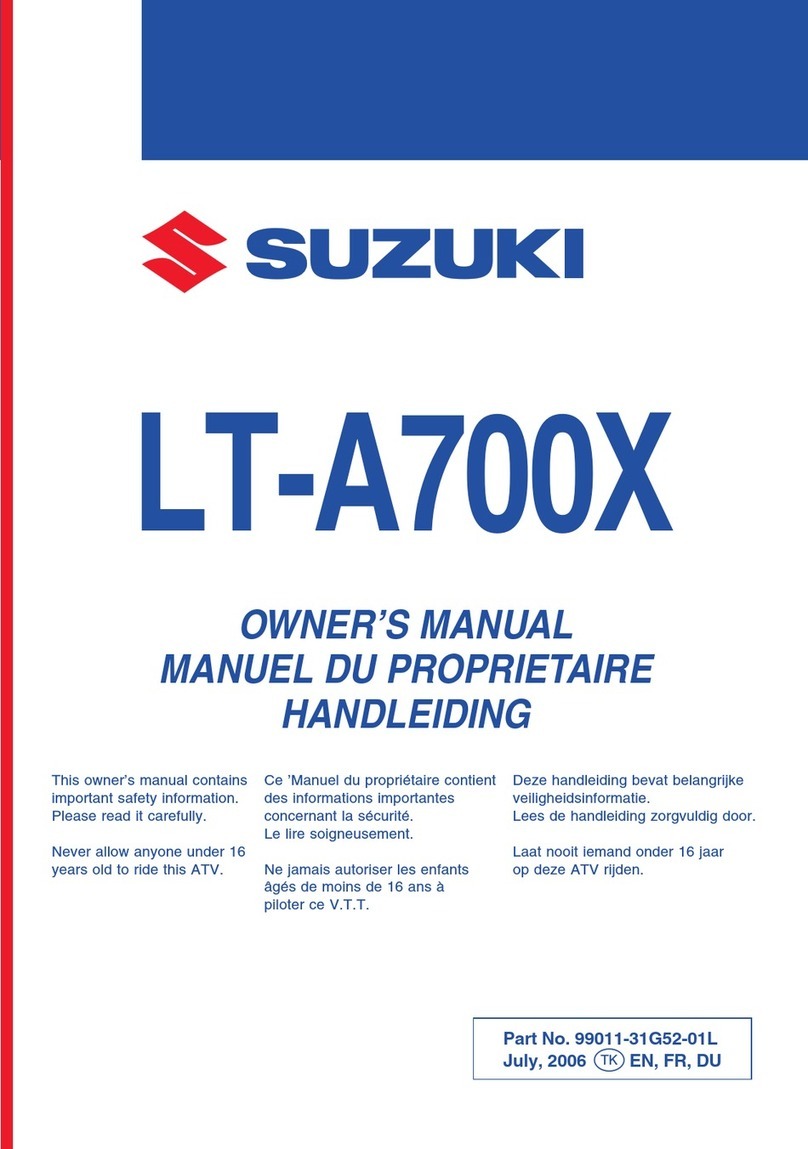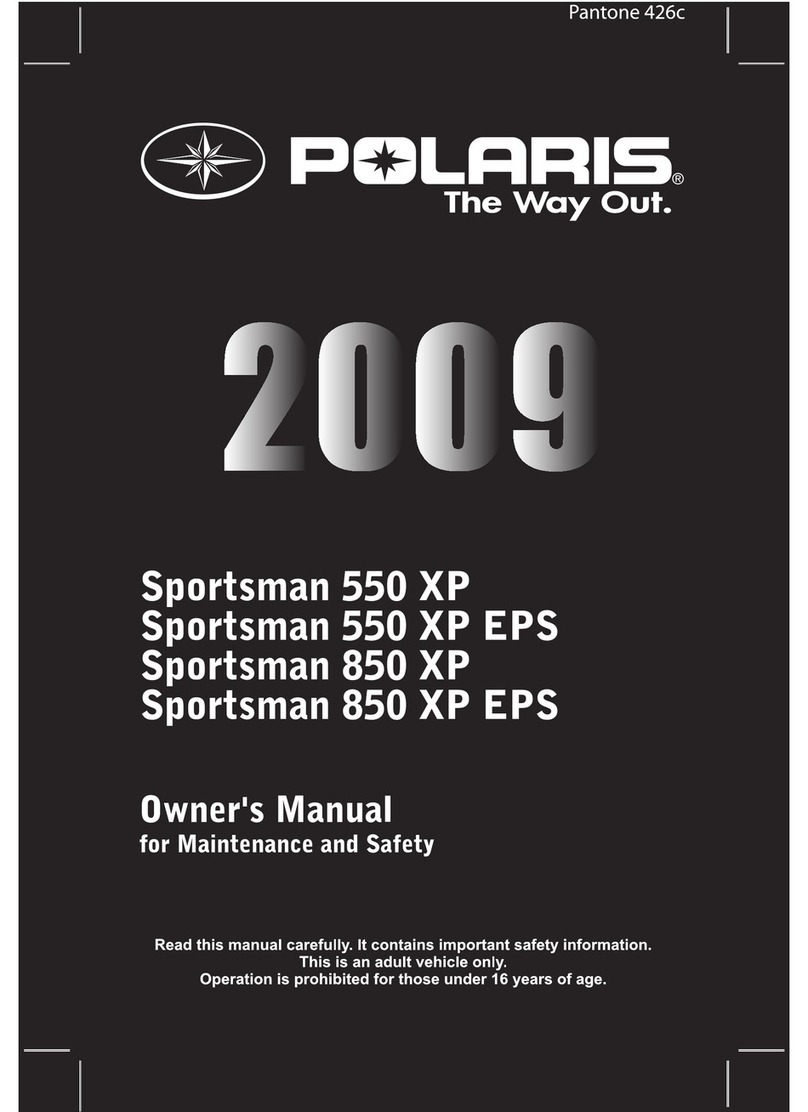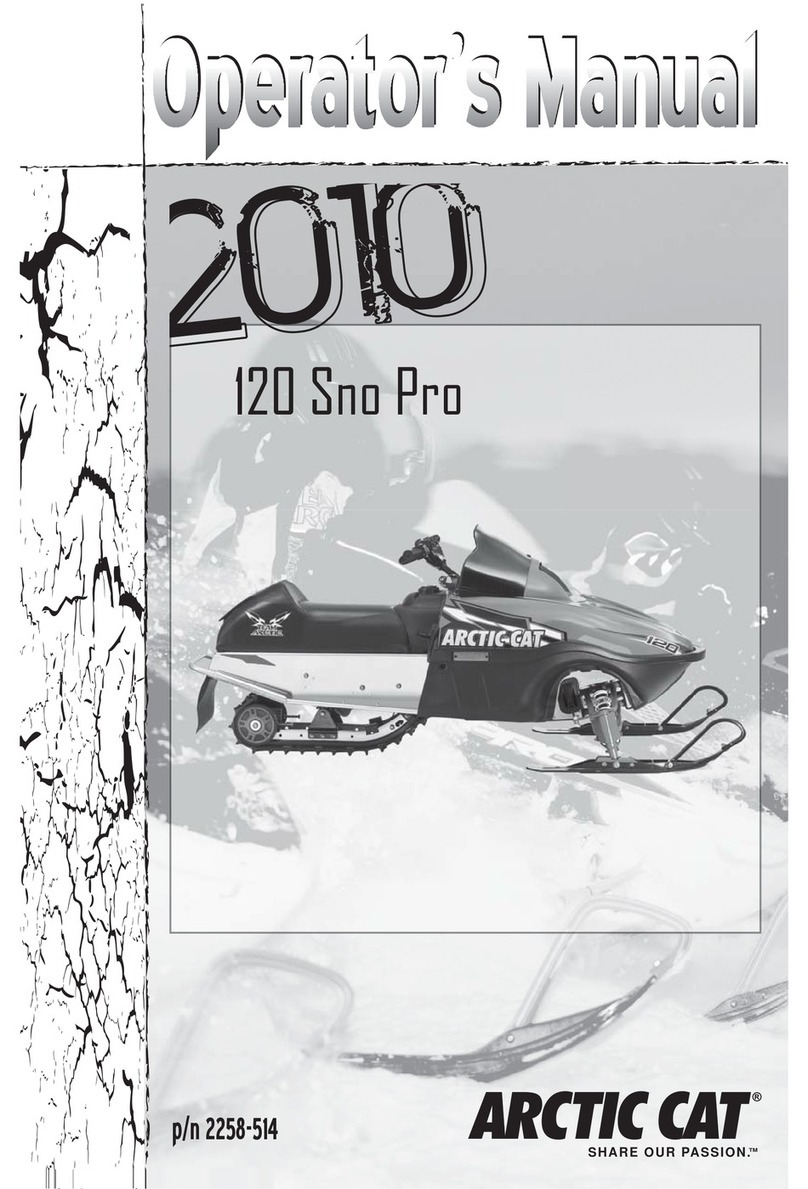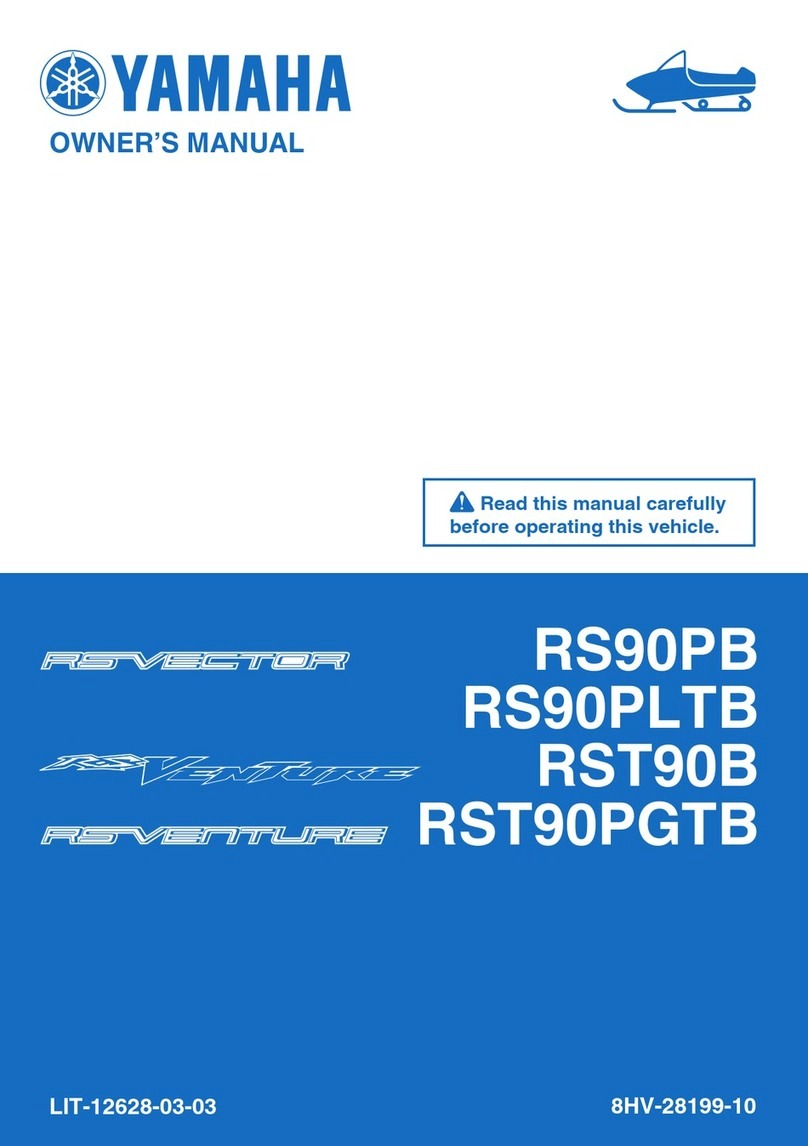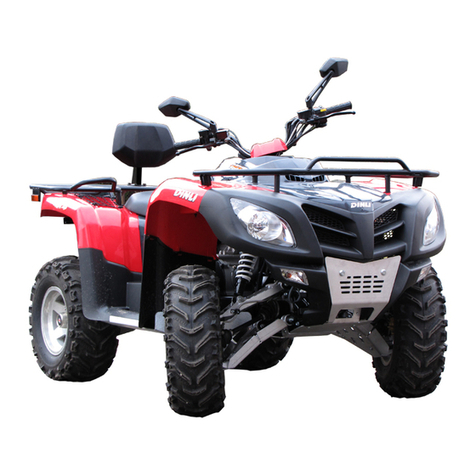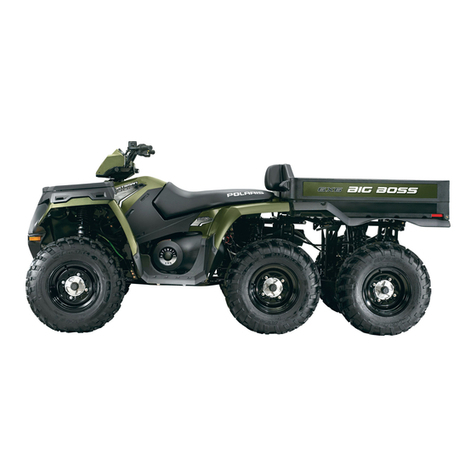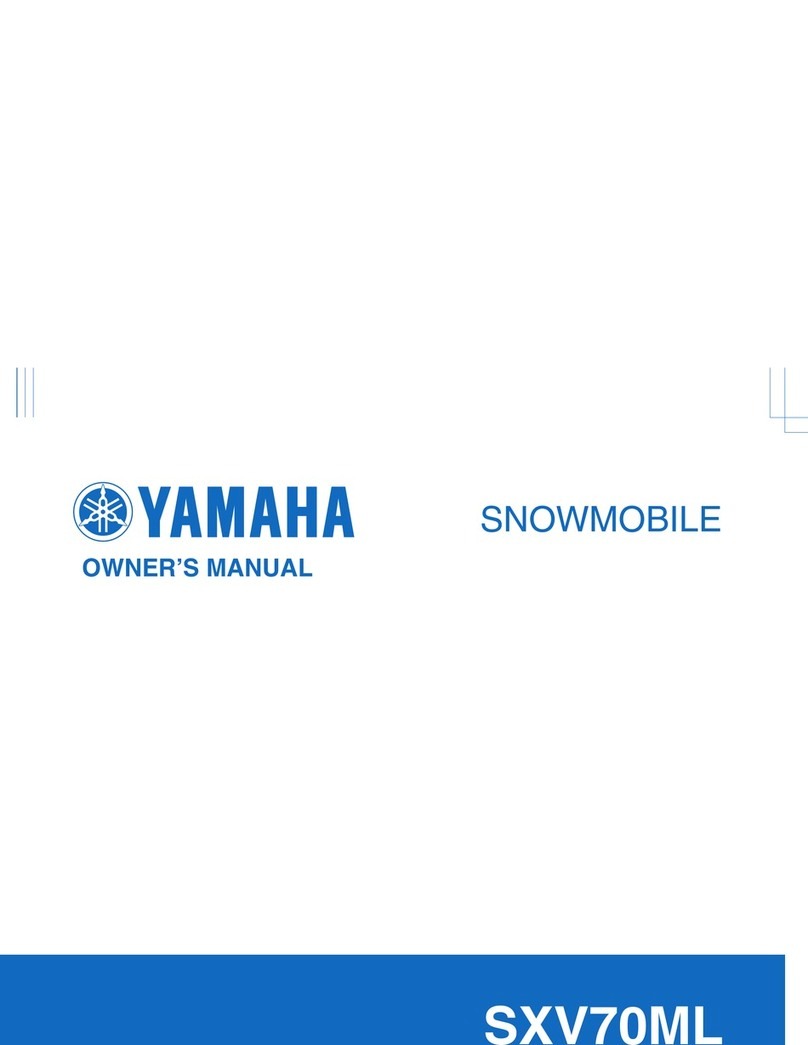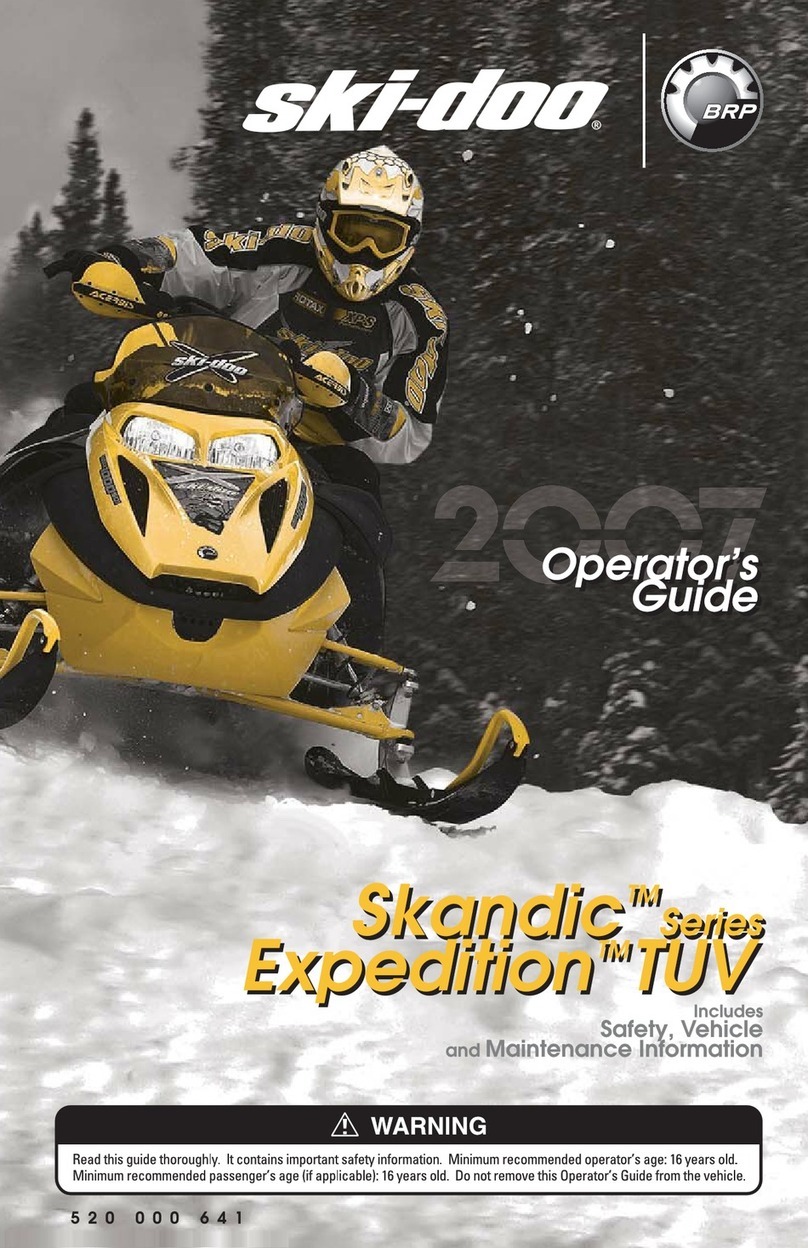
Page 8
Engine Stop Switch
The stop
switch is a red colored rocker switch located
on the left-hand handle bar.
To start and run the engine, this switch must
be placed in the on, “O”, position.
The vehicle is also equipped with a safety
brake switch which will prevent the engine
from starting until the parking brake is
engaged.
To stop your engine, place the switch to the
stop, “X”, position.
In the stop, “X”, position the ignition system is
grounded preventing the spark plug from
firing.
This switch can also be used as a safety or
emergency stop switch.
Manual choke lever (9)
All Viper models are equipped with a
manually operated carburetor choke system.
This choke is operated by the lever at the
bottom of the left hand control switch.
When first starting the engine,(cold start),
place the lever in the full left position, (Choke
closed or on) As the engine warms return the
lever to the full right position. (Choke open or
off).
Throttle lever
The throttle lever is located on the right-hand
handle bar below the grip. To operate the throttle
lever, place your right thumb on the lever and
press forward to increase your speed. To
decrease your speed, reduce your pressure on
the lever and the spring tension will
automatically reduce your speed.
The travel of the throttle lever is controlled by the
throttle stop bolt.
As your operator gains more experience, you
can increase the throttle travel to allow for
additional speed to be obtained.
To increase the throttle’s travel, thus increasing
the maximum speed, turn the throttle stop bolt
counter clockwise. To decrease the throttle’s
travel, thus decreasing the maximum speed, turn
the throttle stop bolt clockwise.
The throttle cable should be adjusted so there is
2mm, (1/8”) free travel at the lever before the
throttle starts to open.
Control Features
www.Get2itParts.com
www.Get2itParts.com
www.Get2itParts.com
